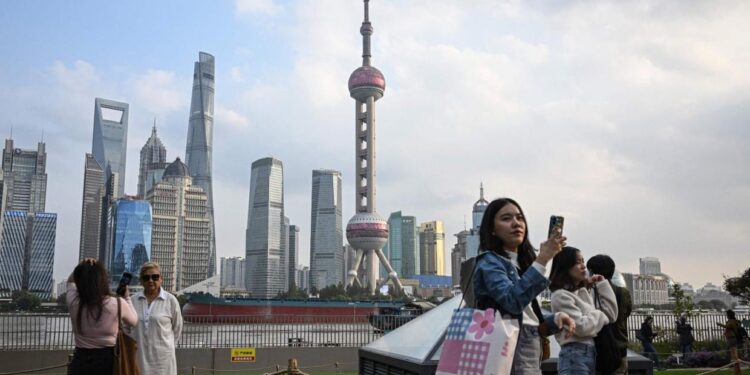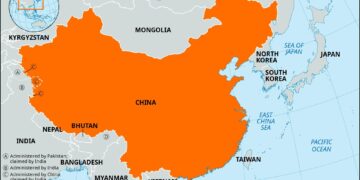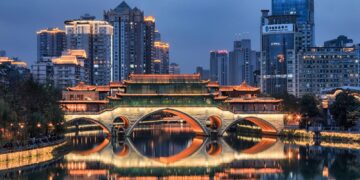As the Asia-Pacific Economic Cooperation (APEC) summit approaches, all eyes are on Shenzhen, a city that has emerged as a beacon of economic transformation and innovation thanks to China’s pioneering Special Economic Zones (SEZ). Renowned author and diplomat Kishore Mahbubani highlights the significance of Shenzhen’s ongoing evolution as both a model and inspiration for nations worldwide seeking to invigorate their economies. With its blend of cutting-edge technology and forward-thinking policies, Shenzhen stands as a testament to the potential that SEZs hold in fostering rapid development and global economic integration. As discussions at APEC promise to tackle pressing challenges and foster collaboration among member nations, Mahbubani’s insights underscore how Shenzhen’s success story could serve as a roadmap for others navigating the complexities of economic growth in today’s interconnected world.
Shenzhen’s Economic Revolution: Lessons from China’s Special Economic Zones
Shenzhen stands as a testament to the transformative power of China’s Special Economic Zones (SEZs), illustrating how targeted economic policies can lead to remarkable urban and industrial growth. Over the past few decades, Shenzhen evolved from a mere fishing village to a global technology hub, attracting investment and talent from around the world. This rapid evolution offers key insights into the mechanics of economic development, particularly in fostering innovation, enhancing infrastructure, and promoting foreign direct investment (FDI). The city’s success prompts several considerations for emerging economies looking to replicate this model:
- Flexible Regulations: Implementing adaptive policies that encourage entrepreneurship and streamline business operations.
- Investment in Talent: Fostering a skilled workforce through educational initiatives and partnerships with local universities.
- Infrastructure Development: Prioritizing state-of-the-art transport and technology infrastructure to facilitate business operations and connectivity.
As Shenzhen gears up to host the APEC meeting, it symbolizes not just China’s economic aspirations but also positions itself as a global leader in advocating for inclusive growth through SEZ strategies. Stakeholders at the APEC summit will undoubtedly examine the city’s blueprint for success and consider how local policies can be tailored to meet the unique challenges of their regions. Equally important is the sustainability of such growth, which involves balancing economic advancement with social equity and environmental stewardship. A focus on:
- Green Technologies: Encouraging the adoption of clean energy and sustainable practices in industries.
- Inclusive Development: Ensuring that economic gains translate to better living standards for all citizens.
- Global Collaboration: Engaging in international dialogue to exchange best practices and innovative solutions.
Kishore Mahbubani on Global Inspirations from China’s Development Model
Kishore Mahbubani has emphasized the significant lessons that nations around the world can draw from China’s development model, particularly through the lens of Shenzhen’s transformation into a global economic powerhouse. As China’s first Special Economic Zone (SEZ), Shenzhen has showcased how targeted economic policies, openness to foreign investment, and an emphasis on technological innovation can yield rapid growth and development. Mahbubani points out that the SEZ model has proven effective in uplifting entire regions and can serve as a blueprint for developing countries seeking to foster economic resilience and enhance their competitive edges on the global stage.
In his discourse, Mahbubani highlights several key aspects that are vital for countries looking to replicate the success seen in Shenzhen:
- Investment in Human Capital: Prioritizing education and skills training to prepare a workforce capable of thriving in a competitive environment.
- Flexible Policy Frameworks: Implementing adaptable policies that can adjust to changing global economic conditions and local needs.
- Infrastructure Development: Investing in robust infrastructure to support business operations and enhance connectivity.
| Factor | Shenzhen’s Approach | Global Implications |
|---|---|---|
| Economic Openness | Encouraged foreign investments and partnerships | Stimulates growth and innovation in local markets |
| Technological Innovation | Promoted R&D through incentives | Drives future industries and digital economy |
| Urban Development | Invested heavily in urban infrastructure | Enhances quality of life and attracts talent |
Preparing for APEC: Strategic Recommendations from Shenzhen’s Success Story
As Shenzhen gears up for the Asia-Pacific Economic Cooperation (APEC) summit, its remarkable journey as a Special Economic Zone (SEZ) serves as an insightful case study for member economies. The city has transformed from a small fishing village to a global hub of innovation, technology, and commerce, demonstrating the potential of economic policies that encourage investment and entrepreneurship. Strategic recommendations emerge from Shenzhen’s success story that could be pivotal for APEC’s discussions:
- Foster Innovation Hubs: Establish more tech incubators and innovation centers to attract startups and entrepreneurs.
- Enhance Connectivity: Improve infrastructure to facilitate seamless trade and travel among member nations.
- Promote Sustainable Practices: Encourage environmentally friendly policies and sustainable development initiatives.
- Facilitate Cross-Border Collaboration: Develop agreements that promote partnerships between economies to share best practices and technologies.
In addition to these recommendations, Shenzhen’s experience highlights the importance of adaptive policy frameworks that can respond to changing global dynamics. The following table summarizes key strategies that APEC countries can consider based on Shenzhen’s model:
| Strategy | Description |
|---|---|
| Investment Incentives | Provide tax breaks and subsidies for foreign and local businesses. |
| Education and Training | Implement programs to upskill the workforce and meet industry demands. |
| Digital Infrastructure | Invest in high-speed internet and digital platforms to foster e-commerce. |
| Regulatory Reforms | Streamline regulations to minimize bureaucratic hurdles for businesses. |
Future Outlook
As Shenzhen prepares to host the Asia-Pacific Economic Cooperation (APEC) meetings, Kishore Mahbubani highlights the critical lessons that China’s Special Economic Zones (SEZs) offer to the world. The success story of Shenzhen, once a humble fishing village and now a thriving metropolis, serves as a testament to the potential of innovative economic policies in fostering development and collaboration. As global leaders convene to discuss pressing issues ranging from sustainable growth to digital transformation, they would do well to draw inspiration from China’s model. The emphasis on pragmatism, adaptability, and investment in infrastructure could provide a roadmap for other nations striving for economic resilience and growth in an increasingly interconnected world. In an era characterized by rapid change and uncertainty, the insights gleaned from Shenzhen’s evolution may very well inform the future of international economic cooperation. Observers around the globe will be watching closely, as the lessons learned from this vibrant SEZ could redefine pathways to prosperity in the Asia-Pacific and beyond.














